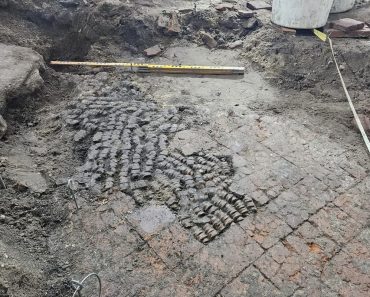
A rapidly spreading wildfire in southern California reached the grounds of the Getty Villa Museum which houses exquisite exhibits from ancient Greece and Rome.
Officials said no structures had burned and the collection was safe.
The Pacific Palisades fire, fueled by a major windstorm and prompting mass evacuations in Los Angeles county, burned some trees and vegetation on site at the Getty Villa, but museum leaders said the galleries and archives were protected.
“Getty Villa collection is safe”
The Villa is located along the Pacific Coast Highway and is roughly 10 miles away from the affiliated Getty Center, the site of the main museum of the world-famous art institution.
The Getty Villa had “made extensive efforts to clear brush from the surrounding area as part of its fire mitigation efforts throughout the year,” Katherine E Fleming, president and CEO of the J Paul Getty Trust, said in a statement early Tuesday evening. While the blaze reached some of the vegetation on the property, “staff and the collection remain safe,” she said.
Fire prevention measures at the Villa include water storage on-site, with irrigation immediately deployed throughout the grounds on Tuesday morning, Fleming said, adding, “Museum galleries and library archives were sealed off from smoke by state-of-the-art air handling systems. The double-walled construction of the galleries also provides significant protection for the collections.”
Footage spread on social media showing some greenery ablaze near a Getty Villa sign, but the video appeared to be of the driveway entrance and a nearby building that is separate from the Villa.
Ancient Greek antiquities at Getty Villa
The Getty Villa is a renowned center for the study and exhibition of ancient Greek, Roman and Etruscan art. It houses a world-class collection of antiquities, spanning thousands of years of history, from the Bronze Age to the late Roman Empire.
Greek antiquities include marble statues of gods, goddesses, heroes and athletes, including depictions of Aphrodite, Zeus and Herakles. There are also bronze sculptures, including rare examples of Greek bronzes like the Victorious Youth (also known as the “Getty Bronze”), a 4th-century BCE statue of a victorious athlete.
There is also a rich collection of painted vases, including black-figure and red-figure pottery, depicting mythological scenes, daily life and athletic contests. Examples include works attributed to famous ancient artists like the Andokides Painter and the Berlin Painter.
In addition, the Getty Villa houses exquisite gold jewelry, such as necklaces, earrings and diadems, showcasing ancient craftsmanship, and small objects like bronze mirrors and ivory carvings.
The Getty Villa frequently rotates pieces from its collection and hosts temporary exhibitions with loans from other museums. These exhibitions often explore specific themes, such as mythology, daily life or the influence of ancient art on later cultures.
The Getty Villa’s collection is not only a treasure trove of ancient art but also a vital resource for education and research into the classical world.







